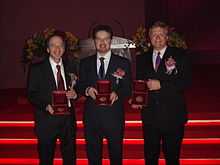List of multiple discoveries
Historians and sociologists have remarked on the occurrence, in science, of "multiple independent discovery". Robert K. Merton defined such "multiples" as instances in which similar discoveries are made by scientists working independently of each other.[1] "Sometimes the discoveries are simultaneous or almost so; sometimes a scientist will make a new discovery which, unknown to him, somebody else has made years before."[2]
Commonly cited examples of multiple independent discovery are the 17th-century independent formulation of calculus by Isaac Newton, Gottfried Wilhelm Leibniz and others, described by A. Rupert Hall;[3] the 18th-century discovery of oxygen by Carl Wilhelm Scheele, Joseph Priestley, Antoine Lavoisier and others; and the theory of the evolution of species, independently advanced in the 19th century by Charles Darwin and Alfred Russel Wallace.
Multiple independent discovery, however, is not limited to only a few historic instances involving giants of scientific research. Merton believed that it is multiple discoveries, rather than unique ones, that represent the common pattern in science.[4]
Merton contrasted a "multiple" with a "singleton"—a discovery that has been made uniquely by a single scientist or group of scientists working together.[5]
Merton's hypothesis is also discussed extensively in Harriet Zuckerman's Scientific Elite.[6]
13th century
- 1242 – first description of the function of pulmonary circulation, in Egypt, by Ibn al-Nafis. Later independently rediscovered by the Europeans, Michael Servetus (1553) and William Harvey (1616).
14th century
- Gresham's (Copernicus') law: Nicole Oresme (ca. 1370); Nicolaus Copernicus (1519);[7] Thomas Gresham (16th century); Henry Dunning Macleod (1857).
16th century
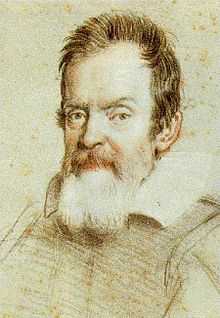
- Galileo Galilei and Simon Stevin: heavy and light balls fall together (contra Aristotle).
- Galileo Galilei and Simon Stevin: Hydrostatic paradox (Stevin ca. 1585, Galileo ca. 1610).
- Scipione dal Ferro (1520) and Niccolò Tartaglia (1535) independently developed a method for solving cubic equations.
17th century
- Sunspots – Thomas Harriot (England, 1610), Johannes and David Fabricius (Frisia, 1611), Galileo Galilei (Italy, 1612), Christoph Scheiner (Germany, 1612).
- Logarithms – John Napier (Scotland, 1614) and Joost Bürgi (Switzerland, 1618).
- Analytic geometry – René Descartes, Pierre de Fermat.
- Problem of points solved by both Pierre de Fermat (France, 1654), Blaise Pascal (France, 1654), and Huygens (Holland, 1657).
- Determinants – Gottfried Wilhelm Leibniz and Seki Kōwa.
- Calculus – Isaac Newton, Gottfried Wilhelm Leibniz, Pierre de Fermat and others.[8]
- Boyle's law (sometimes referred to as the "Boyle-Mariotte law") is one of the gas laws and basis of derivation for the Ideal gas law, which describes the relationship between the product pressure and volume within a closed system as constant when temperature remains at a fixed measure. The law was named for chemist and physicist Robert Boyle who published the original law in 1662. The French physicist Edme Mariotte discovered the same law independently of Boyle in 1676.
- Newton–Raphson method – Joseph Raphson (1690), Isaac Newton (Newton's work was written in 1671, but not published until 1736).
- Brachistochrone problem solved by Johann Bernoulli, Jakob Bernoulli, Isaac Newton, Gottfried Wilhelm Leibniz, Guillaume de l'Hôpital, and Ehrenfried Walther von Tschirnhaus. The problem was posed in 1696 by Johann Bernoulli, and its solutions were published next year.
18th century
- Platinum – Antonio de Ulloa and Charles Wood (both, 1740s).
- Leyden Jar – Ewald Georg von Kleist (1745) and Pieter van Musschenbroek (1745-46).
- Lightning rod – Benjamin Franklin (1749) and Prokop Diviš (1754).
- Oxygen – Carl Wilhelm Scheele (Uppsala, 1773), Joseph Priestley (Wiltshire, 1774). The term was coined by Antoine Lavoisier (1777).
- Black-hole theory: John Michell, in a 1783 paper in The Philosophical Transactions of the Royal Society, wrote: "If the semi-diameter of a sphere of the same density as the Sun in the proportion of five hundred to one, and by supposing light to be attracted by the same force in proportion to its [mass] with other bodies, all light emitted from such a body would be made to return towards it, by its own proper gravity."[9] A few years later, a similar idea was suggested independently by Pierre-Simon Laplace.[10]
- A method for measuring the specific heat of a solid substance was devised independently by Benjamin Thompson, Count Rumford; and by Johan Wilcke, who published his discovery first (apparently not later than 1796, when he died).
19th century


- In a treatise[11] written in 1805 and published in 1866, Carl Friedrich Gauss describes an efficient algorithm to compute the discrete Fourier transform. James W. Cooley and John W. Tukey reinvented a similar algorithm in 1965.[12]
- Complex plane – Geometrical representation of complex numbers was discovered independently by Caspar Wessel (1799), Jean-Robert Argand (1806), John Warren (1828), and Carl Friedrich Gauss (1831).[13]
- Cadmium – Friedrich Strohmeyer, K.S.L Hermann (both in 1817).
- Grotthuss–Draper law (aka the Principle of Photochemical Activation) – first proposed in 1817 by Theodor Grotthuss, then independently, in 1842, by John William Draper. The law states that only that light which is absorbed by a system can bring about a photochemical change.
- Beryllium – Friedrich Wöhler, A.A.B. Bussy (1828).
- Electromagnetic induction was discovered by Michael Faraday in England in 1831, and independently about the same time by Joseph Henry in the U.S.[14]
- Chloroform – Samuel Guthrie in the United States (July 1831), and a few months later Eugène Soubeiran (France) and Justus von Liebig (Germany), all of them using variations of the haloform reaction.
- Non-Euclidean geometry (hyperbolic geometry) – Nikolai Ivanovich Lobachevsky (1830), János Bolyai (1832); preceded by Gauss (unpublished result) ca. 1805.
- Dandelin–Gräffe method, aka Lobachevsky method – an algorithm for finding multiple roots of a polynomial, developed independently by Germinal Pierre Dandelin, Karl Heinrich Gräffe and Nikolai Ivanovich Lobachevsky.
- Electrical telegraph – Charles Wheatstone (England), 1837, Samuel F.B. Morse (United States), 1837.
- First law of thermodynamics – In the late 19th century, various scientists independently stated that energy and matter are persistent, although this was later to be disregarded under subatomic conditions. Hess's Law (Germain Hess), Julius Robert von Mayer, and James Joule were some of the first.
- In 1846, Urbain Le Verrier and John Couch Adams, studying Uranus's orbit, independently proved that another, farther planet must exist. Neptune was found at the predicted moment and position.
- Bessemer Process – The process of removing impurities from steel on an industrial level using oxidation, developed in 1851 by American William Kelly and independently developed and patented in 1855 by eponymous Englishman Sir Henry Bessemer.
- The Möbius strip was discovered independently by the German astronomer–mathematician August Ferdinand Möbius and the German mathematician Johann Benedict Listing in 1858.
- Theory of evolution by natural selection – Charles Darwin (discovery about 1840), Alfred Russel Wallace (discovery about 1857-8) – joint publication, 1859.
- 109P/Swift–Tuttle, the comet generating the Perseid meteor shower, was independently discovered by Lewis Swift on July 16, 1862, and by Horace Parnell Tuttle on July 19, 1862. The comet made a return appearance in 1992, when it was rediscovered by Japanese astronomer Tsuruhiko Kiuchi.
- Helium – Pierre Jansen, Norman Lockyer (both in 1868).[15]
- In 1869, Dmitri Ivanovich Mendeleev published his periodic table of chemical elements, and the following year Julius Lothar Meyer published his independently constructed version.
- In 1876, Oskar Hertwig and Hermann Fol independently described the entry of sperm into the egg and the subsequent fusion of the egg and sperm nuclei to form a single new nucleus.
- In 1876, Elisha Gray and Alexander Graham Bell filed a patent on discovery of the telephone on the same day.
- In 1877 Charles Cros described the principles of the phonograph that was, independently, constructed the following year by Thomas Edison.
- The Hall–Héroult process for inexpensively producing aluminum was independently discovered in 1886 by the American engineer-inventor Charles Martin Hall and the French scientist Paul Héroult.[16]
- Two proofs of the prime number theorem (the asymptotic law of the distribution of prime numbers) were obtained independently by Jacques Hadamard and Charles de la Vallée-Poussin and appeared in the same year (1896).
- Discovery of radioactivity (1896) independently by Henri Becquerel and Silvanus Thompson.[17]
- Discovery of thorium radioactivity (1898) by Gerhard Carl Schmidt and Maria Skłodowska Curie.[18]
- Linguists Filip Fyodorovich Fortunatov and Ferdinand de Saussure independently formulated the sound law now known as the Saussure–Fortunatov law.[19]
20th century

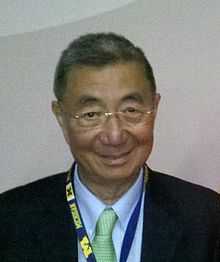
- In 1902 Walter Sutton and Theodor Boveri independently proposed that the hereditary information is carried in the chromosomes.
- In the same year (1902) Richard Assmann and Léon Teisserenc de Bort independently discovered the stratosphere.
- E = mc2, though only Einstein provided the accepted interpretation – Henri Poincaré, 1900; Olinto De Pretto, 1903; Albert Einstein, 1905; Paul Langevin, 1906.[20]
- Epinephrine – synthesized 1904 independently by Friedrich Stolz and Henry Drysdale Dakin.
- Lutetium – discovered 1907 independently by French scientist Georges Urbain and Austrian mineralogist Baron Carl Auer von Welsbach.
- Hilbert space representation theorem, also known as Riesz representation theorem, the mathematical justification of the Bra-ket notation in the theory of quantum mechanics – 1907 independently proved by Frigyes Riesz and Maurice René Fréchet.
- Stark–Einstein law (aka photochemical equivalence law, or photoequivalence law) – independently formulated between 1908 and 1913 by Johannes Stark and Albert Einstein. It states that every photon that is absorbed will cause a (primary) chemical or physical reaction.[21]
- Chandrasekhar Limit - While on a ship and travelling to England from India, to pursue his higher studies, Subramanyan Chandrasekhar calculated that a cold star of about > 1 1/2 times the mass of the sun would not be able to support itself from its own gravity. A similar claim was made by Lev Davidovich Landau at about the same time.[22]
- Frequency-hopping spread spectrum in radio work was described by Johannes Zenneck (1908), Leonard Danilewicz (1929), Willem Broertjes (1929), and Hedy Lamarr and George Antheil (1942 US patent).
- Bacteriophages (viruses that infect bacteria) – Frederick Twort (1915), Félix d'Hérelle (1917).
- Rotor cipher machines – Theo A. van Hengel and R.P.C. Spengler (1915); Edward Hebern (1917); Arthur Scherbius (Enigma machine, 1918); Hugo Koch (1919); Arvid Damm (1919).
- Sound film – Joseph Tykociński-Tykociner (1922), Lee De Forest (1923).
- Georgios Papanikolaou is credited with discovering as early as 1923 that cervical cancer cells can be detected microscopically, though his invention of the Pap test went largely ignored by physicians until 1943. Aurel Babeş of Romania independently made similar discoveries in 1927.[23]
- "Primordial soup" theory of the evolution of life from carbon-based molecules – Alexander Oparin (1924), J.B.S. Haldane.
- The discovery of phosphocreatine was reported by Grace and Philip Eggleton of the University of Cambridge[24] and separately by Cyrus Fiske and Yellapragada Subbarow of the Harvard Medical School[25] in 1927.
- Indefinability theorem, an important limitative result in mathematical logic – Kurt Gödel, Alfred Tarski.
- Natural deduction, an approach to proof theory in philosophical logic – discovered independently by Gerhard Gentzen and Stanisław Jaśkowski in 1934.
- In mathematics, the Gelfond–Schneider theorem is a result which establishes the transcendence of a large class of numbers. It was originally proved in 1934 by Aleksandr Gelfond and again independently proved in 1935 by Theodor Schneider.
- The Penrose triangle, also known as the "tribar", is an impossible object. It was first created by the Swedish artist Oscar Reutersvärd in 1934. The mathematician Roger Penrose independently devised and popularised it in the 1950s.
- In computer science, the concept of the "universal computing machine" (now generally called the "Turing Machine") was proposed by Alan Turing, but also independently by Emil Post,[26] both in 1936. Similar approaches, also aiming to cover the concept of universal computing, were introduced by S.C. Kleene and by Alonzo Church that same year. Also in 1936, Konrad Zuse tried to build a binary electrically-driven mechanical calculator with limited programability; however, Zuse's machine was never fully functional. The Atanasoff–Berry Computer ("ABC"), designed by John Vincent Atanasoff and Clifford Berry, was the first fully electronic digital computing device;[27] while not programmable, it pioneered important elements of modern computing, including binary arithmetic and electronic switching elements,[28][29] though its special-purpose nature and lack of a changeable, stored program distinguish it from modern computers.
- The atom bomb was independently thought of by Leó Szilárd,[30] Józef Rotblat[31] and others.
- The jet engine, independently invented by them, was used in working aircraft by Hans von Ohain (1939), Secondo Campini (1940) and Frank Whittle (1941).
- In agriculture, the ability of synthetic auxins 2,4-D, 2,4,5-T, and MCPA to act as hormone herbicides was discovered independently by four groups in the United States and Great Britain: William G. Templeman and coworkers (1941); Philip Nutman, Gerard Thornton, and Juda Quastel (1942); Franklin Jones (1942); and Ezra Kraus, John W. Mitchell, and Charles L. Hamner (1943). All four groups were subject to various aspects of wartime secrecy, and the exact order of discovery is a matter of some debate.[32]
- Polio vaccine (1950–63): Hilary Koprowski, Jonas Salk, Albert Sabin.
- the integrated circuit was devised independently by Jack Kilby in 1958[33] and half a year later by Robert Noyce.[34] Kilby won the 2000 Nobel Prize in Physics for his part in the invention of the integrated circuit.[35]
- The Higgs boson was developed into a full relativistic model in 1964 independently and almost simultaneously by three groups of physicists: by François Englert and Robert Brout; by Peter Higgs; and by Gerald Guralnik, C. R. Hagen, and Tom Kibble.
- Quantum electrodynamics and renormalization (1930s–40s): Ernst Stueckelberg, Julian Schwinger, Richard Feynman, and Sin-Itiro Tomonaga, for which the latter 3 received the 1965 Nobel Prize in Physics.
- The maser, a precursor to the laser, was described by Russian scientists in 1952, and built independently by scientists at Columbia University in 1953. The laser itself was developed independently by Gordon Gould at Columbia University and by researchers at Bell Labs, and by the Russian scientist Aleksandr Prokhorov.
- Kolmogorov complexity, also known as "Kolmogorov–Chaitin complexity", descriptive complexity, etc., of an object such as a piece of text is a measure of the computational resources needed to specify the object. The concept was independently introduced by Ray Solomonoff, Andrey Kolmogorov and Gregory Chaitin in the 1960s.[36]
- The concept of packet switching, a communications method in which discrete blocks of data (packets) are routed between nodes over data links, was first explored by Paul Baran in the early 1960s, and then independently a few years later by Donald Davies.
- Cosmic background radiation as a signature of the Big Bang was confirmed by Arno Penzias and Robert Wilson of Bell Labs. Penzias and Wilson had been testing a very sensitive microwave detector when they noticed that their equipment was picking up a strange noise that was independent of the orientation (direction) of their instrument. At first they thought the noise was generated due to pigeon droppings in the detector, but even after they removed the droppings the noise was still detected. Meanwhile, at nearby Princeton University two physicists, Robert Dicke and Jim Peebles, were working on a suggestion of George Gamow's that the early universe had been hot and dense; they believed its hot glow could still be detected but would be so red-shifted that it would manifest as microwaves. When Penzias and Wilson learned about this, they realized that they had already detected the red-shifted microwaves and (to the disappointment of Dicke and Peebles) were awarded the 1978 Nobel Prize in physics.[10]
- The Cocke–Younger–Kasami algorithm was independently discovered three times: by T. Kasami (1965), by Daniel H. Younger (1967), and by John Cocke and Jacob T. Schwartz (1970).
- The Wagner–Fischer algorithm, in computer science, was discovered and published at least six times.[37]:43
- In 1970, Howard Temin and David Baltimore independently discovered reverse transcriptase enzymes.
- The Knuth–Morris–Pratt string searching algorithm was developed by Donald Knuth and Vaughan Pratt and independently by J. H. Morris.
- The Cook–Levin theorem (also known as "Cook's theorem"), a result in computational complexity theory, was proven independently by Stephen Cook (1971 in the U.S.) and by Leonid Levin (1973 in the USSR). Levin was not aware of Cook's achievement because of communication difficulties between East and West during the Cold War. The other way round, Levin's work was not widely known in the West until around 1978.[38]
- Mevastatin (compactin; ML-236B) was independently discovered by Akira Endo in Japan in a culture of Penicillium citrinium[39] and by a British group in a culture of Penicillium brevicompactum.[40] Both reports were published in 1976.
- The Bohlen–Pierce scale, a harmonic, non-octave musical scale, was independently discovered by Heinz Bohlen (1972), Kees van Prooijen (1978) and John R. Pierce (1984).
- RSA, an algorithm suitable for signing and encryption in public-key cryptography, was publicly described in 1977 by Ron Rivest, Adi Shamir and Leonard Adleman. An equivalent system had been described in 1973 in an internal document by Clifford Cocks, a British mathematician working for the UK intelligence agency GCHQ, but his work was not revealed until 1997 due to its top-secret classification.
- Asymptotic freedom, which states that the strong nuclear interaction between quarks decreases with decreasing distance, was discovered in 1973 by David Gross and Frank Wilczek, and by David Politzer, and was published in the same edition of the journal Physical Review Letters.[41] For their work the three received the Nobel Prize in Physics in 2004.
- The J/ψ meson was independently discovered by a group at the Stanford Linear Accelerator Center, headed by Burton Richter, and by a group at Brookhaven National Laboratory, headed by Samuel Ting of MIT. Both announced their discoveries on November 11, 1974. For their shared discovery, Richter and Ting shared the 1976 Nobel Prize in Physics.
- Endorphins were discovered independently in Scotland and the US in 1975.
- The use of elliptic curves in cryptography (Elliptic curve cryptography) was suggested independently by Neal Koblitz and Victor S. Miller in 1985.
- The Immerman–Szelepcsényi theorem, another fundamental result in computational complexity theory, was proven independently by Neil Immerman and Róbert Szelepcsényi in 1987.[42]
- In 1989, Thomas R. Cech (Colorado) and Sidney Altman (Yale) won the Nobel Prize in chemistry for their independent discovery in the 1980s of ribozymes – for the "discovery of catalytic properties of RNA" – using different approaches. Catalytic RNA was an unexpected finding, something they were not looking for, and it required rigorous proof that there was no contaminating protein enzyme.
- In 1993, groups led by Donald S. Bethune at IBM and Sumio Iijima at NEC independently discovered single-wall carbon nanotubes and methods to produce them using transition-metal catalysts.
- Conductive polymers: Between 1963 and 1977, doped and oxidized highly-conductive polyacetylene derivatives were independently discovered, "lost", and then rediscovered at least four times. The last rediscovery won the 2000 Nobel prize in Chemistry, for the "discovery and development of conductive polymers". This was without reference to the previous discoveries. Citations in article "Conductive polymers."
21st century
- In 2001 four different authors published different implementations of a distributed hash table.
- The 2006 Shaw Prize in Astronomy and the 2011 Nobel Prize in Physics were both awarded to Saul Perlmutter, Adam G. Riess and Brian P. Schmidt for the 1998 discovery of the accelerating expansion of the universe through observations of distant supernovae.[43]
- In 2012, the collaborations of the ATLAS and CMS experiments at the Large Hadron Collider independently reported the discovery of a new boson with properties in agreement with the Higgs boson.
Quotations
"When the time is ripe for certain things, these things appear in different places in the manner of violets coming to light in early spring."— Farkas Bolyai to his son János in urging him to claim the invention of non-Euclidean geometry without delay,
quoted in Li & Vitanyi, An introduction to Kolmogorov Complexity and Its Applications, 1st ed., p. 83.
See also
- Convergent and divergent production
- Historic recurrence
- History of science
- History of technology
- List of discoveries
- Logology (science of science)
- Multiple discovery
- Priority disputes
- Synchronicity
Notes
- ↑ Robert K. Merton, "Resistance to the Systematic Study of Multiple Discoveries in Science", European Journal of Sociology, 4:237–82, 1963. Reprinted in Robert K. Merton, The Sociology of Science: Theoretical and Empirical Investigations, Chicago, University of Chicago Press,1973, pp. 371–82.
- ↑ Robert K. Merton, The Sociology of Science, 1973.
- ↑ A. Rupert Hall, Philosophers at War, New York, Cambridge University Press, 1980.
- ↑ Robert K. Merton, "Singletons and Multiples in Scientific Discovery: a Chapter in the Sociology of Science", Proceedings of the American Philosophical Society, 105: 470–86, 1961. Reprinted in Robert K. Merton, The Sociology of Science: Theoretical and Empirical Investigations, Chicago, University of Chicago Press, 1973, pp. 343–70.
- ↑ Robert K. Merton, On Social Structure and Science, p. 307.
- ↑ Harriet Zuckerman, Scientific Elite: Nobel Laureates in the United States, Free Press, 1979.
- ↑ "Copernicus seems to have drawn up some notes [on the displacement of good coin from circulation by debased coin] while he was at Olsztyn in 1519. He made them the basis of a report on the matter, written in German, which he presented to the Prussian Diet held in 1522 at Grudziądz... He later drew up a revised and enlarged version of his little treatise, this time in Latin, and setting forth a general theory of money, for presentation to the Diet of 1528." Angus Armitage, The World of Copernicus, 1951, p. 91.
- ↑ Roger Penrose, The Road to Reality, Vintage Books, 2005, p. 103.
- ↑ Alan Ellis, "Black Holes – Part 1 – History", Astronomical Society of Edinburgh, Journal 39, 1999. A description of Michell's theory of black holes.
- ↑ 10.0 10.1 Stephen Hawking, A Brief History of Time, Bantam, 1996, pp. 43-45.
- ↑ Gauss, Carl Friedrich, "Nachlass: Theoria interpolationis methodo nova tractata", Werke, Band 3, Göttingen, Königliche Gesellschaft der Wissenschaften, 1866, pp. 265–327.
- ↑ Heideman, M. T., D. H. Johnson, and C. S. Burrus, "Gauss and the history of the fast Fourier transform", Archive for History of Exact Sciences, vol. 34, no. 3 (1985), pp. 265–277.
- ↑ Roger Penrose, The Road to Reality, Vintage Books, 2005, p. 81.
- ↑ Halliday et al., Physics, vol. 2, 2002, p. 775.
- ↑ "Aug. 18, 1868: Helium Discovered During Total Solar Eclipse", http://www.wired.com/thisdayintech/2009/08/dayintech_0818/
- ↑ Isaac Asimov, Asimov's Biographical Encyclopedia of Science and Technology, p. 933.
- ↑ "Had Becquerel... not [in 1896] presented his discovery to the Académie des Sciences the day after he made it, credit for the discovery of radioactivity, and even a Nobel Prize, would have gone to Silvanus Thompson." Robert William Reid, Marie Curie, New York, New American Library, 1974, ISBN 0002115395, pp. 64-65.
- ↑ "Marie Curie was... beaten in the race to tell of her discovery that thorium gives off rays in the same way as uranium. Unknown to her, a German, Gerhard Carl Schmidt, had published his finding in Berlin two months earlier." Robert William Reid, Marie Curie, New York, New American Library, 1974, ISBN 0002115395, p. 65.
- ↑ N.E. Collinge, The Laws of Indo-European, pp. 149-52.
- ↑ Barbara Goldsmith, Obsessive Genius: The Inner World of Marie Curie, New York, W.W. Norton, 2005, ISBN 0-393-05137-4, p. 166.
- ↑ "Photochemical equivalence law". Encyclopædia Britannica Online. Retrieved 2009-11-07.
- ↑ Stephen Hawking, The Brief History of Time,Bantam press(1996), pg:88.
- ↑ M.J. O'Dowd, E.E. Philipp, The History of Obstetrics & Gynaecology, London, Parthenon Publishing Group, 1994, p. 547.
- ↑ Eggleton, Philip; Eggleton, Grace Palmer (1927). "The inorganic phosphate and a labile form of organic phosphate in the gastrocnemius of the frog". Biochemical Journal 21 (1): 190–195. PMC 1251888. PMID 16743804.
- ↑ Fiske, Cyrus H.; Subbarow, Yellapragada (1927). "The nature of the 'inorganic phosphate' in voluntary muscle". Science 65 (1686): 401–403. doi:10.1126/science.65.1686.401. PMID 17807679.
- ↑ See the "bibliographic notes" at the end of chapter 7 in Hopcroft & Ullman, Introduction to Automata, Languages, and Computation, Addison-Wesley, 1979.
- ↑ Ralston, Anthony; Meek, Christopher, eds. (1976), Encyclopedia of Computer Science (second ed.), pp. 488–489, ISBN 0-88405-321-0
- ↑ Campbell-Kelly, Martin; Aspray, William (1996), Computer: A History of the Information Machine, New York: Basic Books, p. 84, ISBN 0-465-02989-2.
- ↑ Jane Smiley, The Man Who Invented the Computer: The Biography of John Atanasoff, Digital Pioneer, 2010.
- ↑ Richard Rhodes, The Making of the Atomic Bomb, New York, Simon and Schuster, 1986, ISBN 0671441337, p. 27.
- ↑ Irwin Abrams website,
- ↑ Troyer, James (2001). "In the beginning: the multiple discovery of the first hormone herbicides". Weed Science 49 (2): 290–297. doi:10.1614/0043-1745(2001)049[0290:ITBTMD]2.0.CO;2.
- ↑ The Chip that Jack Built, ca. 2008, HTML, Texas Instruments, retrieved 29 May 2008.
- ↑ Christophe Lécuyer, Making Silicon Valley: Innovation and the Growth of High Tech, 1930-1970, MIT Press, 2006, ISBN 0262122812, p. 129.
- ↑ Nobel Web AB, 10 October 2000 The Nobel Prize in Physics 2000, retrieved 29 May 2008.
- ↑ See Chapter 1.6 in the first edition of Li & Vitanyi, An Introduction to Kolmogorov Complexity and Its Applications, who cite Chaitin (1975): "this definition [of Kolmogorov complexity] was independently proposed about 1965 by A.N. Kolmogorov and me ... Both Kolmogorov and I were then unaware of related proposals made in 1960 by Ray Solomonoff."
- ↑ Navarro, Gonzalo (2001). "A guided tour to approximate string matching" (PDF). ACM Computing Surveys 33 (1): 31–88. doi:10.1145/375360.375365.
- ↑ See Garey & Johnson, Computers and intractability, p. 119.
Cf. also the survey article by Trakhtenbrot (see "External Links").
Levin emigrated to the U.S. in 1978. - ↑ Endo, Akira; Kuroda, M.; Tsujita, Y. (1976). "ML-236A, ML-236B, and ML-236C, new inhibitors of cholesterogenesis produced by Penicillium citrinium". Journal of Antibiotics (Tokyo), '". 1976' 29 (12): 1346–8. doi:10.7164/antibiotics.29.1346. PMID 1010803.
- ↑ Brown, Alian G.; Smale, Terry C.; King, Trevor J.; Hasenkamp, Rainer; Thompson, Ronald H. (1976). "Crystal and Molecular Structure of Compactin, a New Antifungal Metabolite from Penicillium brevicompactum". J. Chem. Soc., Perkin Trans 1: 1165–1170. doi:10.1039/P19760001165.
- ↑ D. J. Gross, F. Wilczek, Ultraviolet behavior of non-abeilan gauge theoreies, Phys. Rev. Letters 30 (1973) 1343-1346; H. D. Politzer, Reliable perturbative results for strong interactions, Phys. Rev. Letters 30 (1973) 1346-1349
- ↑ See EATCS on the Gödel Prize 1995.
- ↑ Paál, G.; Horváth, I.; Lukács, B. (1992). Astrophysics and Space Science 191: 107. Bibcode:1992Ap&SS.191..107P. doi:10.1007/BF00644200. Missing or empty
|title=(help)
References
- Armitage, Angus (1951). The World of Copernicus. New York: Mentor Books.
- Isaac Asimov, Asimov's Biographical Encyclopedia of Science and Technology, second revised edition, New York, Doubleday, 1982.
- N.E. Collinge (1985). The Laws of Indo-European. Amsterdam: John Benjamins. ISBN 0-915027-75-5. (U.S.), ISBN 90-272-2102-2 (Europe).
- Michael R. Garey and David S. Johnson (1979). Computers and Intractability: A Guide to the Theory of NP-Completeness. W.H. Freeman. ISBN 0-7167-1045-5.
- A. Rupert Hall, Philosophers at War, New York, Cambridge University Press, 1980.
- David Lamb, Multiple Discovery: The Pattern of Scientific Progress, Amersham, Avebury Press, 1984.
- Ming Li and Paul Vitanyi (1993). An Introduction to Kolmogorov Complexity and Its Applications. New York: Springer-Verlag. ISBN 0-387-94053-7. (U.S.), ISBN 3-540-94053-7 (Europe).
- Robert K. Merton, The Sociology of Science: Theoretical and Empirical Investigations, University of Chicago Press, 1973.
- Robert K. Merton, On Social Structure and Science, edited and with an introduction by Piotr Sztompka, University of Chicago Press, 1996.
- Robert William Reid, Marie Curie, New York, New American Library, 1974, ISBN 0002115395.
- Harriet Zuckerman, Scientific Elite: Nobel Laureates in the United States, Free Press, 1979.
External links
- Annals of Innovation: In the Air:Who says big ideas are rare?, Malcolm Gladwell, The New Yorker, May 12, 2008
- The Technium: Simultaneous Invention, Kevin Kelly, May 9, 2008
- Apperceptual: The Heroic Theory of Scientific Development at the Wayback Machine (archived May 12, 2008), Peter Turney, January 15, 2007
- A Survey of Russian Approaches to Perebor (Brute-Force Searches) Algorithms, by B.A. Trakhtenbrot, in the Annals of the History of Computing, 6(4):384-400, 1984.
- This list is incomplete; you can help by expanding it.
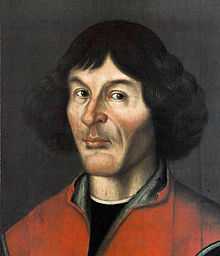


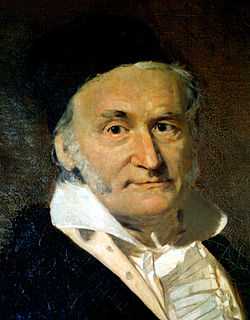




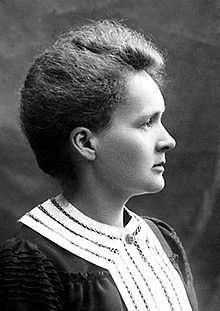



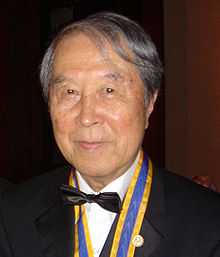
3.jpg)


